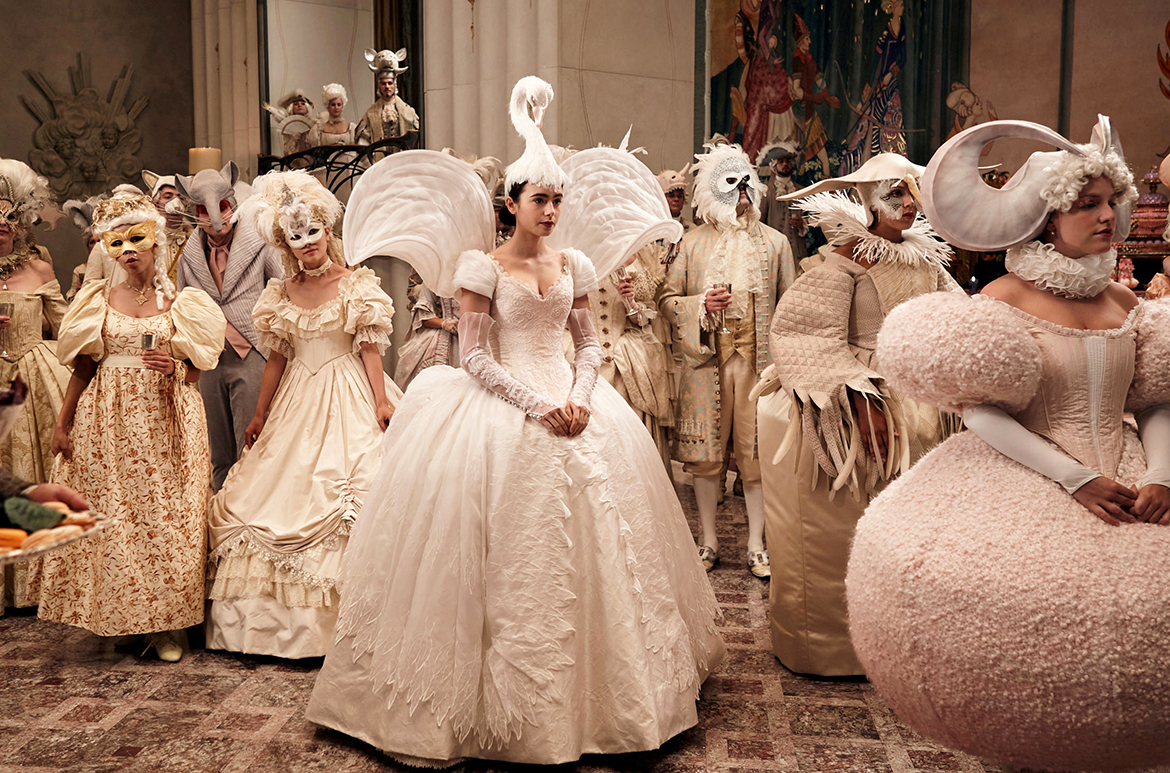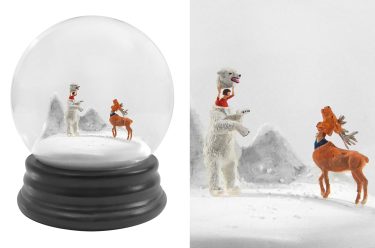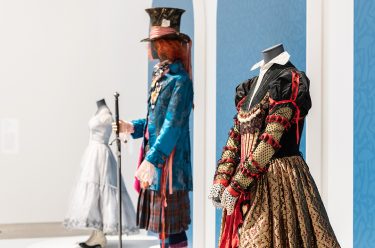The ‘Fairy Tales’ exhibition at Brisbane’s Gallery of Modern Art (GOMA) until 28 April 2024 assembles the work of contemporary artists, designers and filmmakers who interrogate the fairy tale through an expansive range of media.
Buy Tickets to ‘Fairy Tales’
Until 28 April 2024
Gallery of Modern Art, Brisbane
Works of sculpture, installation, painting, photography, printmaking, papercut, design, animation, interactive installation, video art, augmented reality, film, film props, costumes and filmic elements are displayed across three themes: ‘Into the Woods’, which investigates classics of the fairy tale canon by exploring archetypal figures and their current applications in visual storytelling; ‘Through the Looking Glass’, where newer tales of parallel worlds populated with unexpected ideas and pathways, both physical and metaphorical, are celebrated; and ‘Ever After’, where both classic and contemporary tales come together to see aspirations celebrated, conventions challenged and new directions emerge.
RELATED: Journey through the ‘Fairy Tales’ exhibition with our weekly series
Into the Woods
Gustave Doré ‘Little Red Riding Hood’ 1862

Kiki Smith ‘Born’ 2002
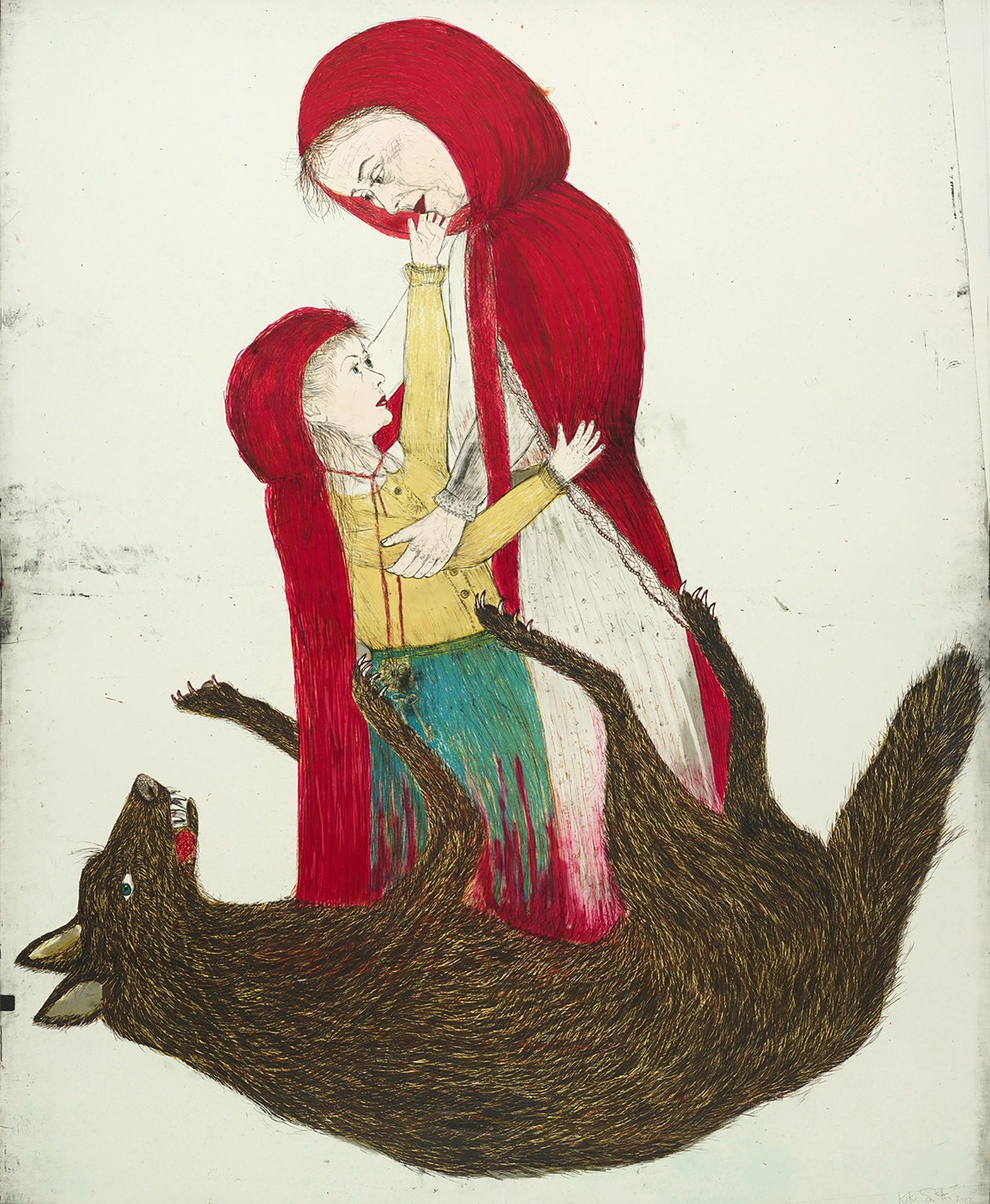
Well-known visual motifs are highlighted throughout — with images of woods and trees, mirrors and blood, apples and witch houses, impossible shoes and clothing for royalty, as well as castles, coaches and a pumpkin. The exhibition considers themes of magic, enchantment, thresholds and transformation, while also articulating the concepts of power imbalance and injustice, gender and otherness, ageing, and resilience in the face of adversity. Not everything is playful, not everything is dark and, as we know from real life, not everything is simple.
From centuries-old oral tales to today’s multifaceted delivery across print, screen, performance and the visual arts, the fairy tale has negotiated its way from tales of the working class to the heights of aristocracy and back again, a chameleon shifting and changing to the needs of its audience.
Fairy tales were created in such settings to provide sustenance for the soul in the form of wistful diversions from the drudgery of domestic duties over long days and dark nights. Arising from the oral tradition of wonder tales, they brought together wit and wisdom, entertainment and guidance, caution and the joy of possibility. Told to young and old, these stories were peppered with tales of kings and queens, castles and coaches, feasts and riches, as well as magical moments proffering ways one might — in a faraway land, a long time ago — bask in the love and security one craved. Within these humble tales, social and domestic issues were raised, taboos discussed, community values expressed and generational wisdom shared. It is in this realm of relative safety that both storytellers and audiences could seek respite from the seemingly inescapable weight of life’s challenges and dive into a world where their voices could not only be heard, but entire lives could be imagined.
Through the Looking Glass
Walter Martin & Paloma Muñoz ‘Traveler 314’ 2018
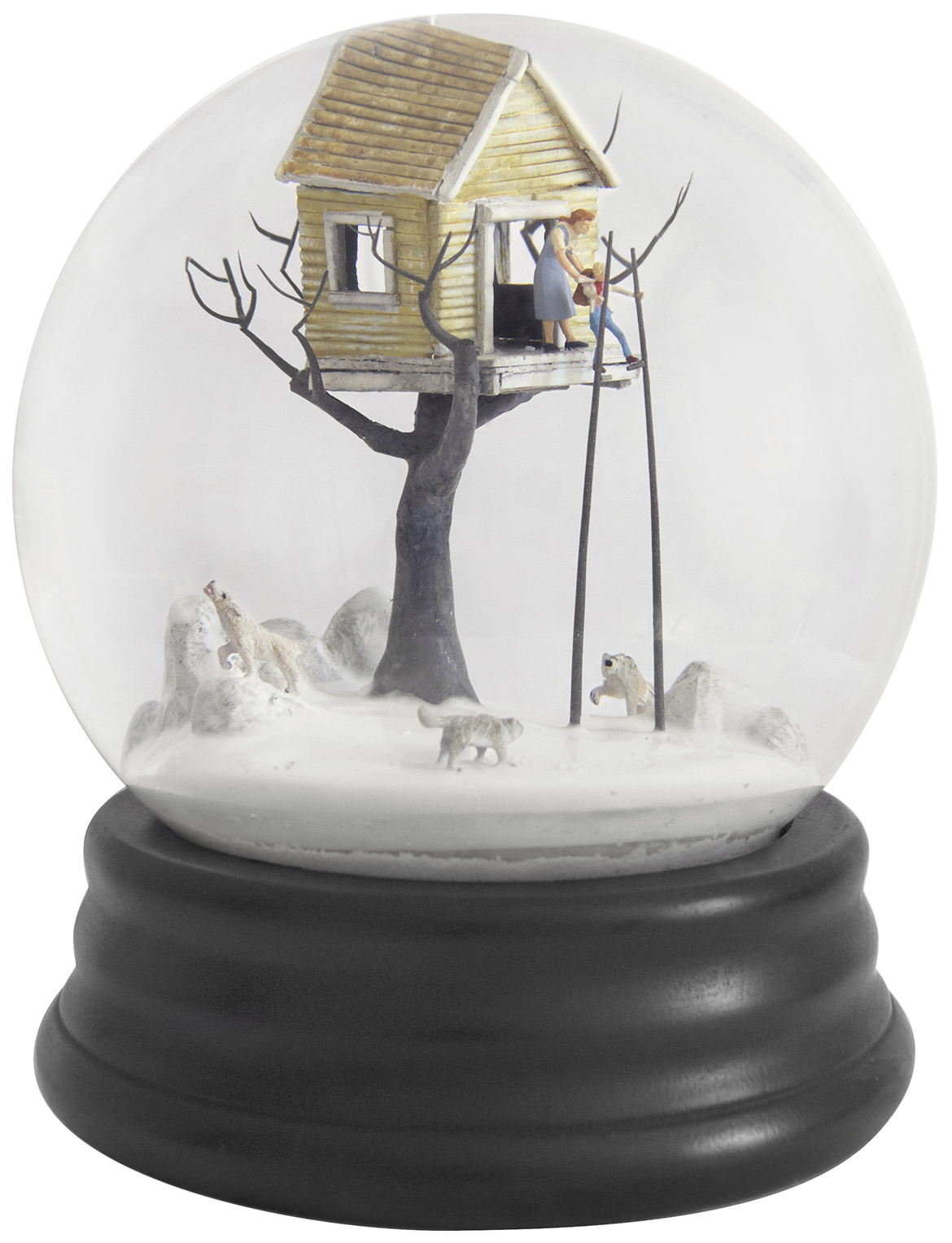
Charles Blackman ‘The Blue Alice’ 1956-57
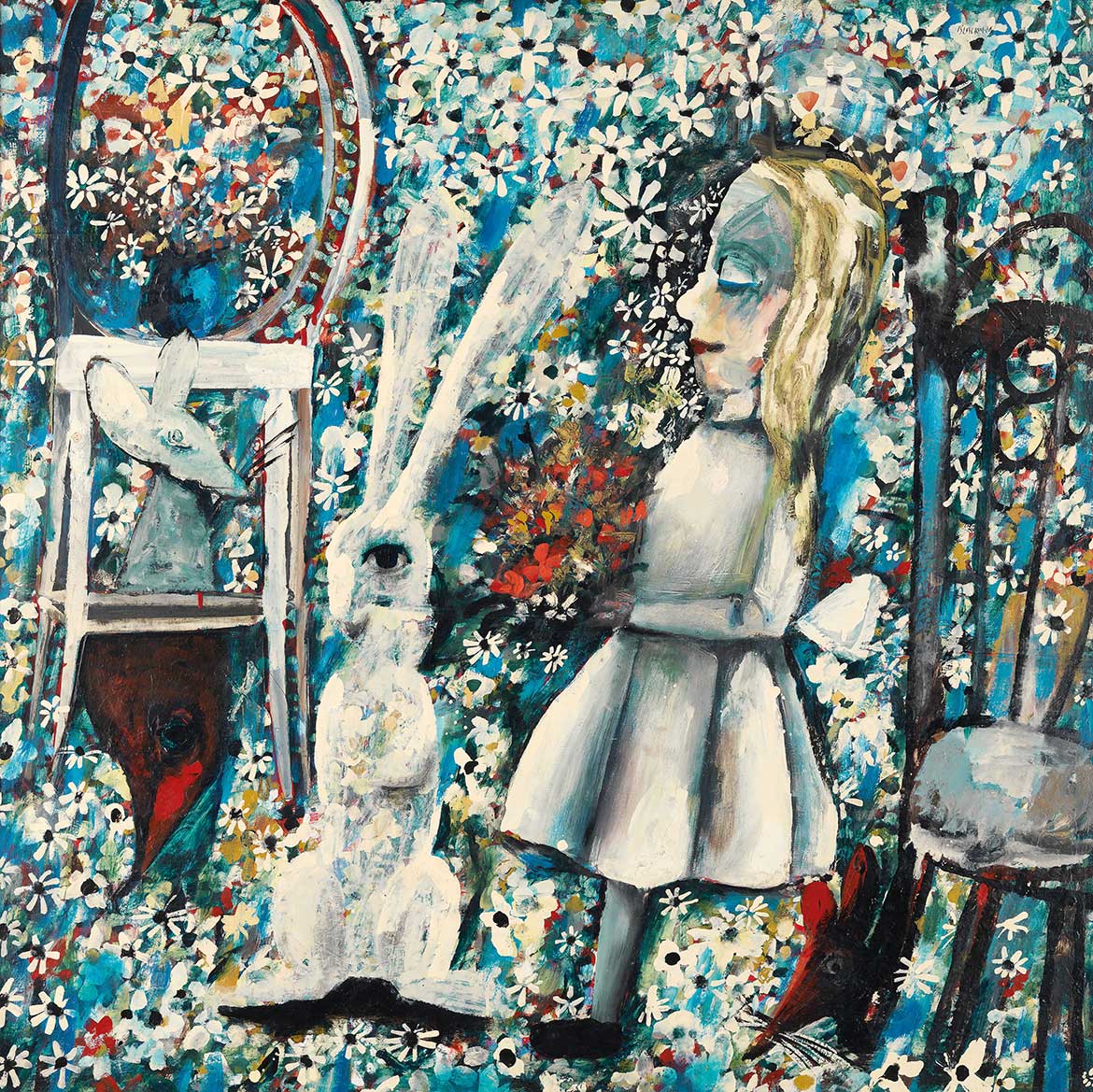
But the Pied Piper has to be paid. For all their fulfilment of wishes and dreams, fairy tales also speak of the darker sides of life: fractured families and domestic strife; jealousy, greed and prejudice; cruelty and abandonment; scarcity and poverty; lust and abuse; and the harsh reality that, even within the home, predators have many guises.
The veil between real life and that of the fairy tale is gossamer thin. For all their talk of glitter and gold, of magical trees and flying horses, at their heart, fairy tales are a test kitchen for our gravest concerns. They are told, retold, remixed and remade in the hope of creating outcomes that are fairer, kinder, safer and more palatable than in reality. It is one of the many reasons fairy tales live on today. No matter how far we think we’ve come, shadows still nip at our heels. Children go missing, predators lurk with potions and poisons, alleyways and basements remain ripe for abuse, families are shattered by mistrust and violence, and beneath all the tears and chaos there is always want — both desire and lack — that never goes away. Humans are flawed creatures, divisive, discordant and at times dangerous.
Ever After
Mirror Mirror ‘Wedding dress’ costume 2012
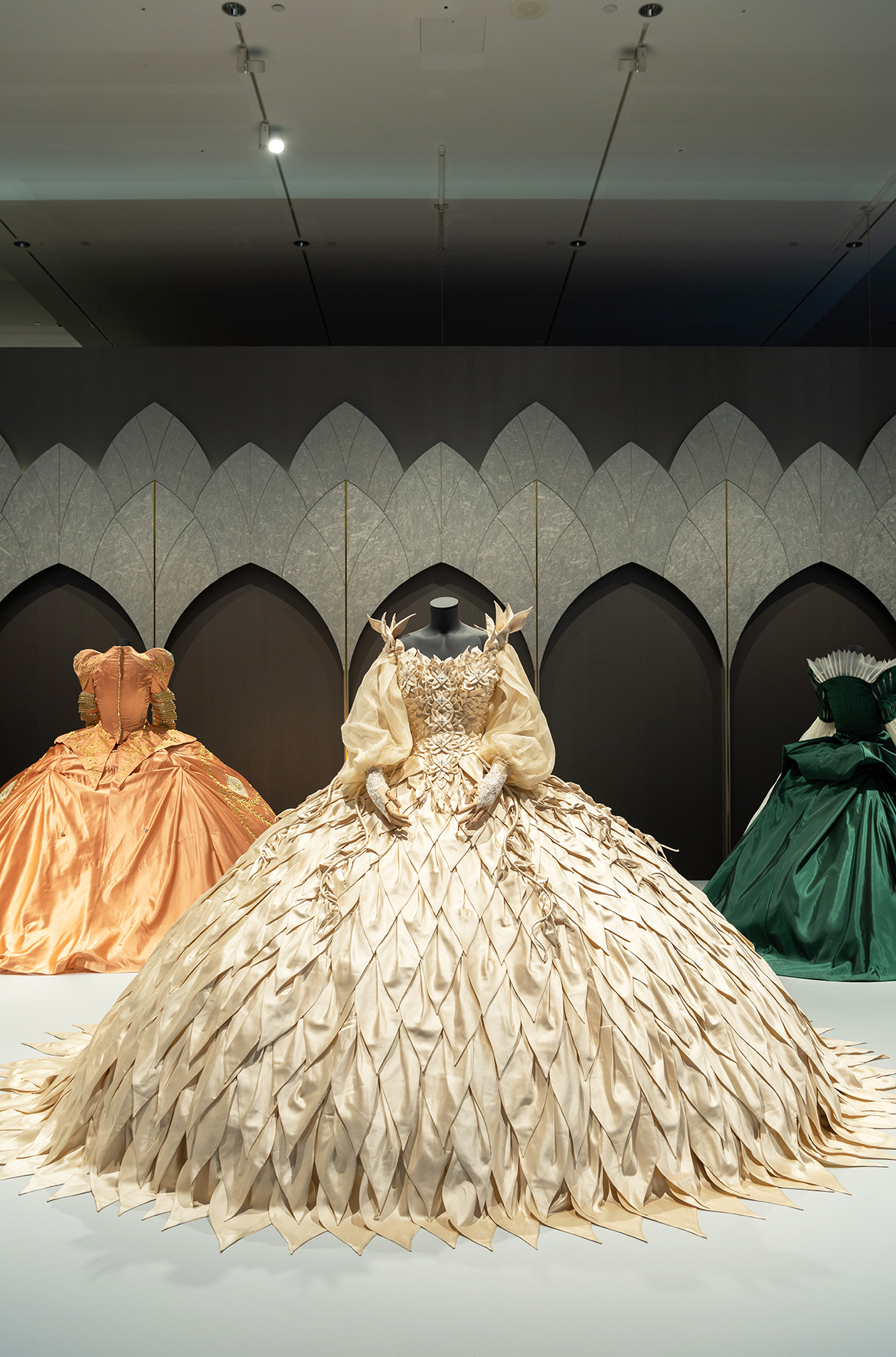
Production stills from ‘Mirror Mirror‘ 2012
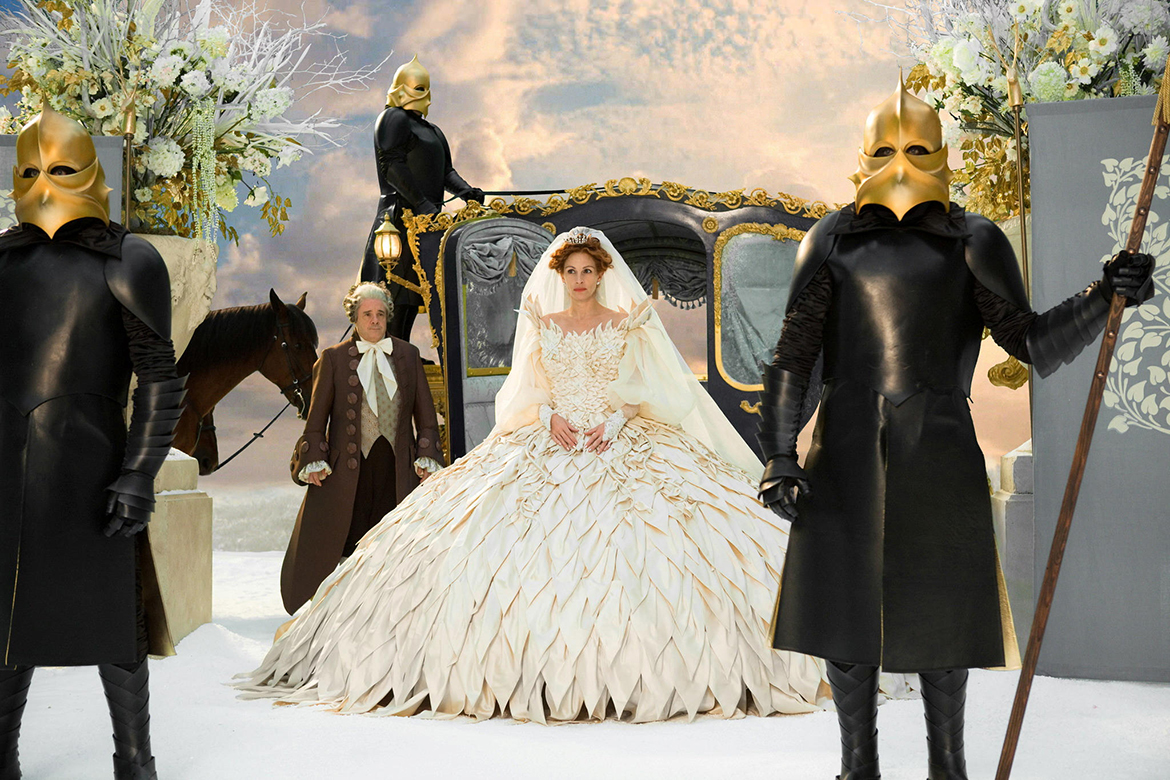

Mirror Mirror ‘Rabbit suit’ costume 2012

Telling difficult truths is not only the purview of fairy tales — artists, too, have long tackled challenging ideas. Likewise, the arts have offered platforms through which to envision change. Across many forms and forums, artists have consciously looked to provoke and destabilise conventions and prejudices, challenging others to look beyond their indifference and inertia. Art is a lived experience. The ‘how’ and ‘why’ of the stories artists tell, and the creative wells they draw from, reflect the fluid and multifaceted nature of art and the cultural, political and social imperatives that surround us.
Fairy tales continue to demonstrate their expansiveness and mutability, telling and retelling narratives across contemporary art, music, dance, theatre, literature and screen content. Their proliferation in broader social and commercial uses, from lipstick sales to home security politicking, underscores their enduring appeal. Given these tales’ ubiquity, it is little wonder artists are drawn to them and the polymorphic opportunities they represent.
Fairy tales not only provide opportunities for artists to confront the issues inherent in these narratives, but also offer a conduit through which to address difficult and complex issues that underpin their existing practices.
Gustave Doré ‘Donkey Skin’ 1862
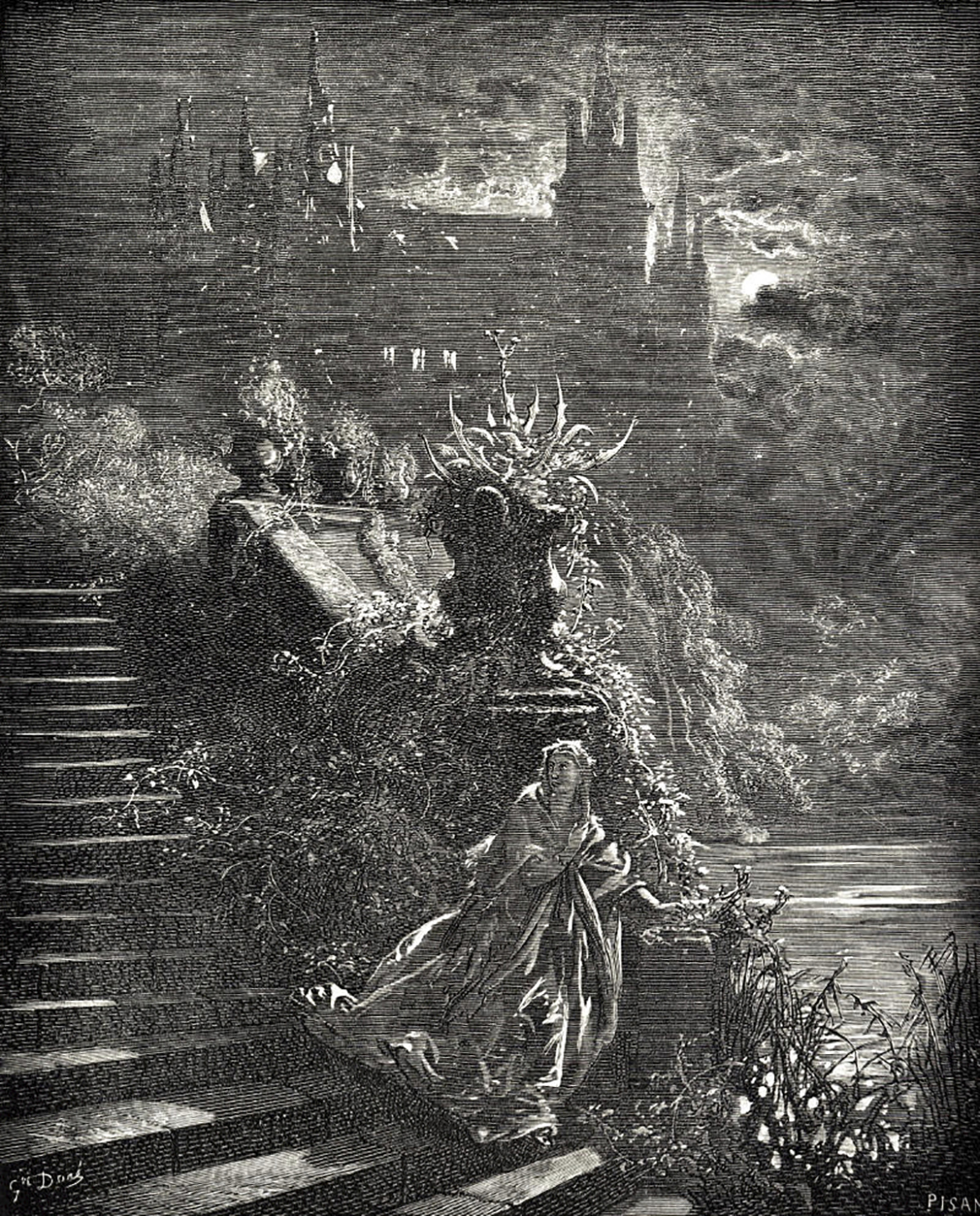
Arthur Rackham ‘Hansel and Gretel’ 1909

Depicting fairy tales in art is not new. Many of our ideas of what fairy tales look like have been profoundly influenced by Gustave Doré’s illustrations for the classic book of fairy tales by Charles Perrault, Les Contes de Perrault (The Fairy Tales of Charles Perrault) (1867), and Arthur Rackham’s drawings for Fairy Tales of the Brothers Grimm (1909). The popularity and wide distribution of illustrated nineteenth-century fairy tale publications meant these images became inextricably tied to the written texts. The collision between the fairy tale and visual art, however, is a product of more recent times, a response from the 1960’s onward to social discord surrounding issues of gender equality, civil rights, and war. The 1970s in particular were an important time for the rise of feminism, which destabilised how fairy tales were interpreted. Authors such as Angela Carter were at the forefront of interrogating the ways fairy tales informed social structures, and how reconsideration and reclamation of earlier tales — before their softening for children — could again inform ways of navigating life’s challenges.
Amanda Slack-Smith, ‘Fairy Tales’ Curator & Curatorial Manager, Australian Cinémathèque, QAGOMA
This edited extract from ‘Do Not Handle With Care: Fairy Tales Remixed and Remade’ was originally published in Fairy Tales in Art and Film, Queensland Art Gallery | Gallery of Modern Art, 2023
The ‘Fairy Tales’ exhibition is at Brisbane’s Gallery of Modern Art (GOMA), Australia from 2 December 2023 until 28 April 2024.
‘Fairy Tales Cinema: Truth, Power and Enchantment‘ presented in conjunction with GOMA’s blockbuster summer exhibition screens at the Australian Cinémathèque, GOMA from 2 December 2023 until 28 April 2024.
The major publication ‘Fairy Tales in Art and Film’ available at the QAGOMA Store and online explores how fairy tales have held our fascination for centuries through art and culture.
From gift ideas, treats just for you or the exhibition publication, visit the ‘Fairy Tales’ exhibition shop at GOMA or online.

Featured image: Tarsem Singh, India/United States b.1961 / Production still from Mirror Mirror 2012 showing ‘Swan dress’ worn by Lily Collins as ‘Princess Snow’ / 35mm, colour, Dolby Digital, 106 minutes, United States/Canada, English / Director: Tarsem Singh / Producers: Bernie Goldmann, Ryan Kavanaugh, Brett Ratner / Script: Marc Klein, Jason Keller, Melisa Wallack / Cinematographer: Brendan Galvin / Editors: Robert Duffy, Nick Moore / Cast: Julia Roberts, Lily Collins, Armie Hammer, Nathan Lane, Jordan Prentice, Mark Povinelli, Joe Gnoffo, Danny Woodburn, Sebastian Saraceno, Martin Klebba, Ronald Lee Clark / © 2012 UV RML NL Assets LLC. / Photograph: Jan Thijs / Image courtesy: Relativity Media
#QAGOMA
